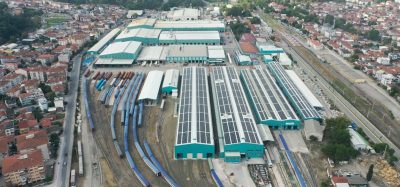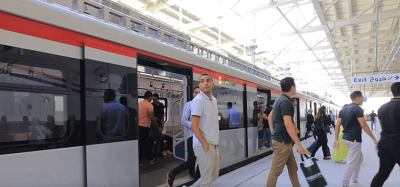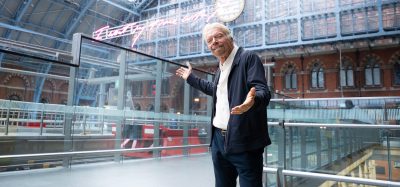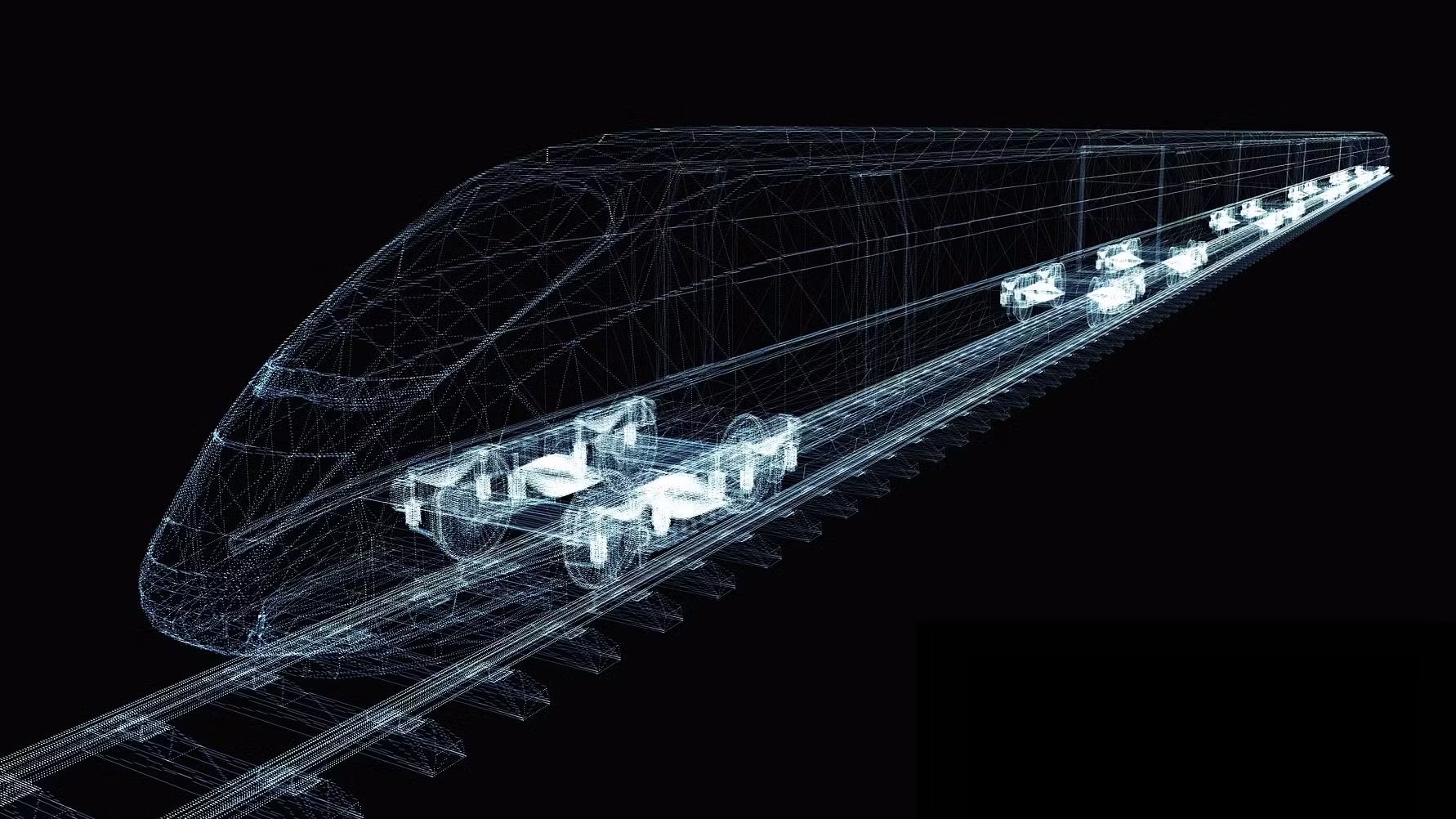Smart infrastructure and connectivity in American public transportation
Posted: 26 September 2024 | Dottie Watkins - CapMetro, Jon Nouchi - City and County of Honolulu | 1 comment
Jon Nouchi, Deputy Director of the City and County of Honolulu Department of Transportation Services, and Dottie Watkins, CEO of CapMetro, discuss how smart infrastructure is revolutionising public transportation across the U.S.


Public transportation is undergoing a transformation in cities across the globe. As public transport operators and authorities strive for greater efficiency, sustainability and a more positive passenger experience, the concept of smart infrastructure is taking centre stage. From Internet of Things solutions to intelligent traffic management systems and real-time data analytics, cities are harnessing the power of technology to create a more seamless and user-friendly public transportation network.
In this article, industry leaders from Honolulu and Austin explore how smart infrastructure solutions are being embraced to revolutionise public transport systems nationwide.
How has your city embraced the concept of smart infrastructure to improve public transportation efficiency and sustainability?
Jon Nouchi: As the most isolated capital city in the nation, you might think Honolulu would be slow to innovate and would be behind our partners on the American continent. However, we are a city who embraced innovation as far back as the 19th century, where our royal palace had electricity before the U.S.’ White House.
Join our free webinar: Rail cyber-security in a time of technological and regulatory transformation
Join our expert panel, including speakers from Nokia and Siemens Mobility, to explore the critical convergence of cybersecurity and 5G rail comms.
Date: 3 Dec | Time: 15:00 GMT
Can’t attend live? No worries – register to receive the recording post-event.
You might think Honolulu would be slow to innovate… However, we are a city who embraced innovation as far back as the 19th century, where our royal palace had electricity before the U.S.’ White House”
Similarly, our public transportation networks are influenced by innovative mobility technologies firstly for passenger information and comfort and paralleled with efficient operations and maintenance of our mobility services. We are early adopters and innovators of smart infrastructures and have contributed to the inception of, and ongoing development of, initiatives such as the General Transit Feed Specification (GTFS, formerly Google Transit Feed Specification).
Dottie Watkins: The Austin Metro has consistently been one of the fastest growing areas in the country year after year, and surrounding areas once considered ‘suburban’ are now more urban and more connected to one another. CapMetro moves people in and between Austin and our five suburban member cities in the service area and provides almost two million trips per month across our network, primarily on local buses but also commuter buses and rail, on-demand service, paratransit service and bike-share. To meet the needs of growing communities, CapMetro, and the surrounding areas need to innovate and embrace holistic approaches to transportation and land-use planning.
In 2020, Austin voters overwhelmingly supported substantial investments in public transit through the passing of Project Connect, a multi-year, multi-billion-dollar transit investment to expand transit options throughout the Austin area. Project Connect includes new light rail, new rapid bus lines powered by a new zero-emission bus fleet, a new regional rail service, and investments into the planning and development near transit corridors to equitably support the overall quality of life for persons of all incomes and backgrounds.
Equitable Transit-Oriented Developments (ETODs), as it’s known, is a trailblazing initiative focused on equity. It prioritises underrepresented voices, aligns transit and housing strategies across multiple agencies, and is a once-in-a-lifetime opportunity to implement policies that advance major infrastructure construction.
Each of these projects are one tool in a toolbox that, when realised, would significantly change how our community works, lives, plays and moves.
How does the implementation of smart infrastructure in your city’s public transportation system align with the unique urban challenges and infrastructure requirements commonly found in the U.S.?
The City of Austin adopted a 2039 modal shift goal that aims to only have 50% of residents reliant on a single-occupancy vehicle”
Nouchi: Transit operations are comparatively not well-funded in the U.S. compared to other countries; this results in more basic and minimal service which do not operate frequently and reliably. Ridership has declined in most places since the COVID-19 pandemic. In order to attract, and more importantly, retain riders, transit agencies need to innovate and rethink services and provide real-time information on all of their services. In Honolulu, we recently opened our Skyline rail system, which is a fully grade-separated, fully automated and autonomous rail service. We also restructured legacy bus services to connect passengers to the new Skyline. As we continue the buildout of Skyline, we will continue to reinvent our bus services to adapt to new ridership patterns as we grow new equitable communities around Skyline stations. Uniquely, we aim to use the nearly 20-mile Skyline rail viaduct as an alternative data corridor to house high-speed fibre broadband for network resiliency.
Watkins: Texas is primarily a car-centric state, and mode-shift is a huge challenge. Amidst the region’s economic and population growth, the intersection of mobility, housing density and land use planning is key. The City of Austin, for example, adopted a 2039 modal shift goal that aims to only have 50% of residents reliant on a single-occupancy vehicle. CapMetro, along with the City of Austin and the Austin Transit Partnership, is advancing multimodal transportation. Future public transport network improvements, such as light rail and an accessible bus system brought on by Project Connect, will better connect neighbourhoods in and outside our city. Additionally, policy shifts at the city level will support future multimodal mobility. Amendments such as the removal of parking minimums and building higher density near transit corridors are critical to the future success of a growing region.
The City of Austin is also supporting a new Smart Mobility division that seeks to foster creative, mutually beneficial partnerships to support the safe development, testing and integration of emerging mobility solutions. The city is calling on private sector organisations wishing to propose mobility solutions of the future to test new technology that may soon arrive on Austin streets.


Credit: City and County of Honolulu – Honolulu’s recently opened Skyline rail system is a fully grade-separated and fully autonomous rail service.
Can you discuss specific examples of how Internet of Thing (IoT) devices and sensors have been integrated into your public transportation network to enhance operations and passenger experiences?
Nouchi: The technological requirements of our transit vehicles continue to boom and require large upgrades and network capabilities. Our vehicle location platform integrates component level devices such as destination sign controllers, automatic passenger counters, fare systems, infotainment and on-board security cameras. As early adopters of AVL from the early 2000s, we were forced to increase data resolution and granularity to seek location information from transit vehicles. Where we used to get a location report every 90 seconds, we are now aiming at receiving each vehicle’s location every three seconds or less. This will aid us in the implementation of cloud-based transit signal priority for our busiest transit corridors and expedited travel for our passengers.
Watkins: The internet, social media and hand-held smart devices have fundamentally changed the way people live. Being always connected has the advantage of connecting riders with information quickly and conveniently. If a route is delayed or detoured, connected customers can be notified immediately.
With technology, CapMetro is able to bridge a gap between the long-standing challenges of service delivery for paratransit riders and the available services and contemporary needs of our riders”
Recently, CapMetro embraced technological advancements through the implementation of one of the world’s largest automated paratransit systems. Through a partnership with SpareLabs, CapMetro replaced its paratransit management system with a modern ADA platform. With technology, we’re able to bridge a gap between the long-standing challenges of service delivery for paratransit riders and the available services and contemporary needs of our riders. The result allows customers to enjoy hands-free boarding, auto-pay fares and real-time notifications about their journey through communication of their choice. Accurate arrival and departure times allow riders to plan their journeys effectively and stay informed.
Operationally, we’re able to manage reservations, scheduling and dispatch more efficiently. The digitisation of these processes means routes are planned efficiently and sustainably. This example of embracing technology is redefining the future paratransit service delivery for all transit providers and ensures that CapMetro remains at the forefront of inclusive innovation in transit.


Credit: CapMetro – CapMetro embraced technological advancements through the implementation of one of the world’s largest automated paratransit systems, replacing its paratransit management system with a modern ADA platform.
What challenges did your city face during the implementation of smart infrastructure solutions, and how were these challenges addressed?
Nouchi: We’ve transitioned from having a single point of integration with many proprietary devices to the greater simplicity of IoT networking on-board vehicles. This sharing of common data as well as common transportation APIs has revolutionised the ease of data sharing between platforms in mobility.
How do intelligent traffic management systems contribute to optimising traffic flow and reducing congestion in your city’s public transportation corridors?
Nouchi: The City and County of Honolulu opened Hōkūpaʻa, our Joint Traffic Management Centre (JTMC) in 2020, which integrated traffic management by housing federal, state and local partners under the same roof. Within this centre, transportation officials who manage our island-wide traffic signal system work side by side with police, fire, ocean safety and 911 dispatchers to integrate incident management on our 600-square mile island. The centre boasted at the time of construction 19 miles of electrical conduit, five miles of fibre-optic data cabling, and over 100 miles of network cables. When incidents occur which affect flow and congestion on island, all first responders and transportation officials sit shoulder-to-shoulder on one operations floor, where they can affect outcomes for travellers on our limited road space.


Credit: City and County of Honolulu – Honolulu’s Joint Traffic Management Center is a multi-agency collaboration to improve traffic management and public safety co-ordination on O‘ahu.
How has the integration of smart infrastructure in your city’s public transportation system contributed to advancing sustainability goals, such as reducing carbon emissions, promoting energy efficiency and encouraging the use of alternative modes of transportation?
Nouchi: Smart infrastructure includes smart charging infrastructure, and we have embarked on an ambitious zero-emission fleet plan for electric buses featuring both depot and on-route charging technologies.
Watkins: There are several ways to look at how infrastructure can be ‘smart’. For example, smart (or digitally connected) infrastructure is a game-changer in three primary ways:
Digital interfaces and apps provide connections to a larger mobile ecosystem that allows users to choose transportation options that best meet their needs”
Firstly, smart infrastructure is more accessible. Digital interfaces and apps provide connections to a larger mobile ecosystem that allows users to choose transportation options that best meet their needs. One example is lessening their dependence on single-occupant vehicles. We can connect bike-share, rail and bus services much more seamlessly, and we can get to the places we need to, all by being connected. At the same time, users can track fuel usage per route or method of transport and opt for routes and mobility options that avoid or reduce carbon emissions.
Secondly, smart infrastructure allows us access to data that tracks and reports our carbon impact. Advanced metering and monitoring systems collect data and produce models to better understand where we need to improve. When set up properly, these smart data interfaces allow us to compare and benchmark our efficiency and conservation efforts. EPAs Energy Star, one of the systems that we use for reporting, is a pioneer in using data of this kind for comparative reporting and benchmarking.
And finally, smart infrastructure also allows access to real-time information so we can adjust our systems more quickly and efficiently to reduce our impact. For example, we can access energy use, water use, waste generation and fuel use in near real-time. The sustainability and efficiency applications of this type of tech are still being explored. The possibilities for real change and impact reduction are promising.
Some of the ‘smart’ in smart infrastructure is about following the best path forward through our infrastructure implementation. For example, we use peer-reviewed and developed sustainability frameworks, such as Envision for Sustainable Infrastructure and Leadership in Energy and Environmental Design (LEED), to help provide a foundation and pathway to help us design and build the right projects in the right way.
Lastly, the Yard Autonomous Research Demonstration (YARD) project is an FTA-funded co-operative research project that leverages innovative tech. In the first phase, a single 40’ CapMetro electric bus will be modified with autonomous driving technology and operate within the bus maintenance yard. The bus will autonomously perform basic manoeuvres, including starting, braking and avoiding hazards. These demonstrations also include charging at the pantograph charger, running through the bus wash, and parking /relocation for the end and beginning of shifts. The research for this project will collect data on workforce development opportunities (where service workers could now be trained to perform higher-level maintenance tasks), mapping for future control software applications (where the bus could be operated from our control centre), operated remotely (such as parking vehicles closer together to save real estate), moved to and from maintenance garage, and meeting the operator at the staging area (saving lab costs), and many more applications. An autonomous yard promotes a safer work environment as there would be less foot traffic around the yard, particularly during the early morning or late evening.
In what ways have data analytics and real-time monitoring been utilised to make informed decisions regarding public transportation routes, schedules and service adjustments?
Nouchi: We utilise two software-as-a-service (SaaS) platforms to plan and evaluate transit services. Remix allows us to re-envision and better apportion our planned service as we face budget constraints, even as we expand our Skyline rail and TheBus system networks. The Swiftly platform lets us monitor our system performance in real-time and determine the efficiencies and performance of our transit services. Every foot and minute used most productively for our passengers count cumulatively towards our own system sustainability. We owe it to our passengers to ensure every bit of service we place on the roads is well-spent for taxpayers.
Looking towards the future, what emerging technologies or advancements in smart infrastructure do you believe will have the most significant impact on enhancing the efficiency and sustainability of public transportation systems across the U.S.?
Nouchi: AI could have a huge impact on future mobility services. Broadly, AI has already shown benefits in system transit asset management and other visual applications. However, I believe AI has yet to conquer human gaps in analysing route and schedule efficiencies to maximise route coverage, frequency, scheduling and productivity.
  |
  |
|
Jon Nouchi |
Dottie Watkins |
| Deputy Director, City and County of Honolulu Department of Transportation Services | CEO, CapMetro |
Stay Connected with Global Railway Review — Subscribe for Free!
Get exclusive access to the latest rail industry insights from Global Railway Review — all tailored to your interests.
✅ Expert-Led Webinars – Gain insights from global industry leaders
✅ Weekly News & Reports – Rail project updates, thought leadership, and exclusive interviews
✅ Partner Innovations – Discover cutting-edge rail technologies
✅ Print/Digital Magazine – Enjoy two in-depth issues per year, packed with expert content
Choose the updates that matter most to you. Sign up now to stay informed, inspired, and connected — all for free!
Thank you for being part of our community. Let’s keep shaping the future of rail together!
Related topics
Digitalisation, Internet of Things (IoT), Sustainability/Decarbonisation








Smart railway calls for a redundant and resilient infrastructure.
All robust modes, all but railways, upgrade for added load and lower costs.
Current track standard does not sustain allowed load and speed.
“studs”, “cracs” and “RCF” (fatigue at railhead!…) is not sustainable.
Dynamic forces, by system, twice magnitude by working load, shall be attended and outed!